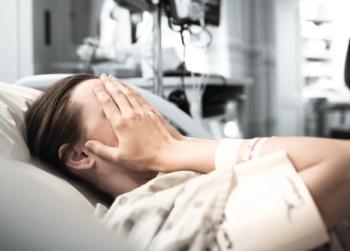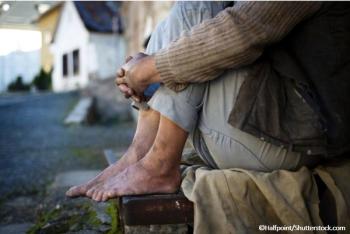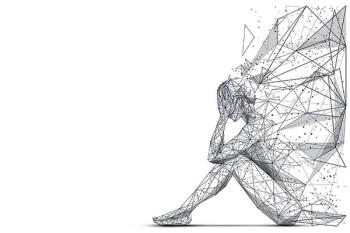
While only a minority of patients with cancer may have diagnosable PTSD, subthreshold symptoms in some patients may be debilitationg enough that clinicians should be aware of the phenomenon.

While only a minority of patients with cancer may have diagnosable PTSD, subthreshold symptoms in some patients may be debilitationg enough that clinicians should be aware of the phenomenon.

Patients with schizophrenia often have worse outcomes than their peers without the diagnosis. How you can support your patient in ensuring a better cancer prognosis?

The articles in Part I of this Special Report discuss PTSD in cancer, special issues for patients with schizophrenia and cancer, and distress management.

Distress and depression are associated with adverse outcomes in patients with cancer, including reduced quality of life, longer rehabilitation time, poor adherence to treatment, and worse survival.

Despite the vast research conducted to better understand biological mechanisms underlying psychosis, people with psychotic disorders continue to suffer.

Those of us who have a diagnosis of a psychotic disorder are, above all, human beings. We are more than the disorder.

Psychotic disorders are potentially serious and enduring and have been seriously neglected in health systems worldwide. The good news is that better medium-term outcomes are now achievable.

Drs Zuardi and Crippa discuss the current stage of scientific evidence that supports the use of cannabidiol in schizophrenia, anxiety, and Parkinson disease.

While it may be challenging to differentiate between OCD and other anxiety disorders, using a multi-informant assessment and understanding the content of a patient’s fears is a fundamental start to outlining an effective treatment plan.

Familiarity with self-disorders is an indispensable tool in diagnosing a patient suspected for developing schizophrenia. Such knowledge improves communication with the patient and may serve as a starting point for therapeutic intervention.

Living with a mental illness is all too often accompanied by poverty and social disadvantage, which contribute to shortened life spans and reduced quality of life. However, there approaches for addressing many of the preventable causes of poor health and mortality in this patient population.

Policy initiatives can improve both physical and mental health care quality and outcomes for those with serious mental illnesses.

Mental health conditions are highly prevalent in homeless populations. Further research and advocacy are needed to address the obstacles that homeless individuals encounter in accessing mental health care.

The mortality rate is unacceptably high in patient with serious mental illnesses. Several psychosocial interventions have been developed that may benefit these patients.

The premature mortality of individuals with depression is an alarming public health concern. Physical exercise may help address this concern, but it represents an underutilized intervention.

The associations between sleep/rhythms and psychiatric disorders are not well understood. With additional research we can better address key issues and improve patient outcomes.

The steadily rising rate of suicide in the US is a vexing public health crisis. Among the many risk factors for suicidal thoughts and behaviors is sleep disturbance.

Circadian rhythms have a profound effect on our mental and physical health. Indeed, mental health and circadian health are tightly entwined, and circadian interventions can improve mood and well-being, even in healthy people.

An overview of the theoretical and empirical literature linking PTSD, substance use, and IPV, as well as risk factors for depression and other psychiatric disorders.

As psychiatrists we must remember that comorbidities is often the rule, not the exception. This is especially true for obsessive and compulsive disorder (OCD).

OCD in the general population often differs from OCD that presents in the perinatal period. It is imperative to recognize, assess, and treat perinatal OCD to improve maternal and child outcomes and have a transgenerational impact.

OCD symptoms can be quite difficult to recognize. Not understanding what is happening, patients tend to be ashamed and suffer in silence, often resulting in a period of 8 to 10 years of untreated illness and long-term negative outcomes.

This review highlights an important diagnostic and therapeutic task: the importance of differentiating true bipolar disorder/obsessive-compulsive disorder comorbidity from BD with secondary OCD.

Despite heterogeneity in symptoms, there is growing realization that common neurobiological processes may contribute to OCD vulnerability and its persistence.

The articles in this Special Report focus on the interplay between trauma and its consequences, including violent behaviors, substance use disorders, and stroke. Taken together, the articles may contribute to a better understanding of-and treatment development for-patients exposed to trauma.

Ultimately, the decision about involuntary treatment is about risk, not predictable outcomes. In many cases, however, these decisions are much more difficult and, until our crystal balls arrive, our best efforts may still fall short.

Psychotic violence is associated with primary psychotic disorders such as schizophrenia, schizoaffective disorder, and bipolar disorder. While it may be that psychotic violence is the least common type of violence in inpatient environments, it is also the most treatable.

This generation of young people may have a unique risk of exposure to stress and researchers and clinicians are increasingly concerned about the long-term health consequences of such chronic exposure for young adults.

With their early age of onset, high prevalence, chronicity, and pervasive impact on multiple domains of functioning, the burden of mood disorders exceeds that of virtually all medical conditions in the US and globally in terms of disability, cost, and suffering.

Just as the progress over recent decades has improved the clinical evaluation and management of BD among children and adolescents, the remaining gaps serve to inform future progress.